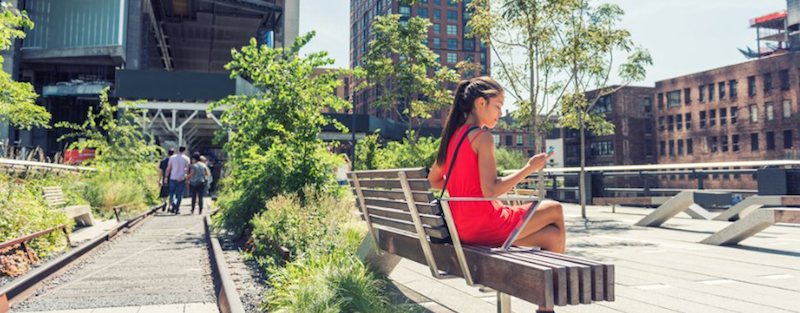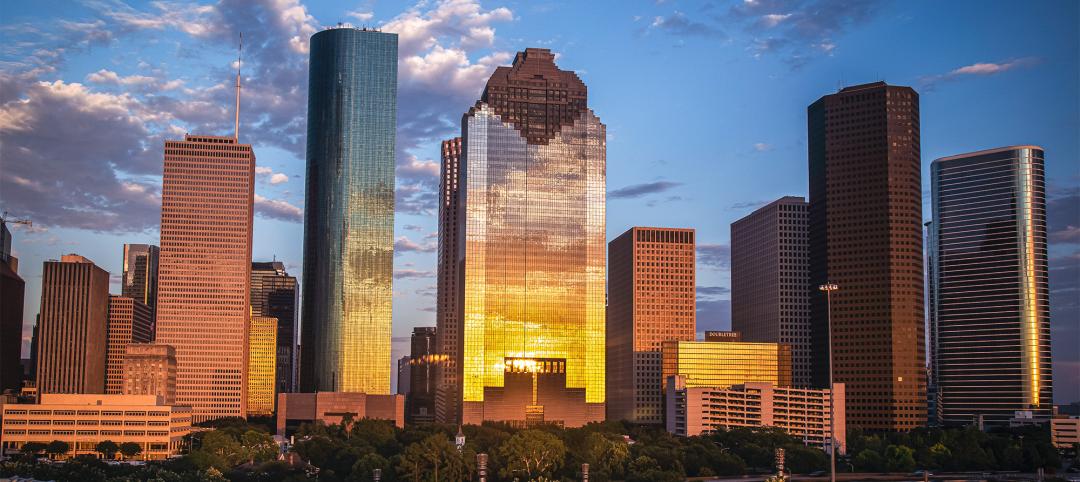As part of its Living Standard initiative, today, the U.S. Green Building Council (USGBC) released a new U.S. public research report titled Standard Issue that sets out to better gauge how the public feels about issues at the core of the green building community’s mission: sustainability, green buildings and the environment. The report takes a closer look at Americans’ views on environmental issues and how the green building industry can be better positioned as a global solution. As part of the report, USGBC commissioned ClearPath Strategies, a global public opinion research company, to conduct qualitative and quantitative research across five regions of the U.S.
“For more than a quarter century now, the USGBC community has worked to prove that buildings are very much living entities that, if created with forethought and compassion, can mitigate climate-related risks,” said Mahesh Ramanujam, president and CEO, USGBC. “But we need to do more. We know that green buildings are only part of the solution to lengthening and bettering the lives of every person on the planet. That’s why the heart of the green building community’s efforts must go beyond construction or efficiency. Instead, our focus must be on what matters most within our buildings: people. This research questions our conventional wisdom and experience and helps inform our strategy for the future.”
USGBC is working to elevate the role of green buildings beyond the environment and economy and focus on the personal health and well-being benefits they provide. The report found that while three-quarters of respondents said environmental problems are very or somewhat important to them, they do very little to address the problems in their own lives, considering it too daunting a task.
The research also shows that people want to live in a healthy environment, but don’t typically associate green buildings with being part of the solution. When asked which terms most strongly relate to the environment and being green, only 11% said green buildings.
When considering the connection between green buildings and personal health, almost a third (32%) indicated they have direct, personal experience with bad health associated with poor environments or living situations. In addition, when ranking how healthy their local environment is on a scale of 1-10, 65% gave it less than an eight.
The research suggests there is a gap between the enormity of the problem and how people seek to address it in their daily lives, and that the green building community can mobilize and inspire change by connecting messaging to healthy outcomes for human beings.
“When people think about emissions, they think about cars, power plants and industries. They rarely think about buildings, leaving the green building community with a messaging mountain to climb,” continued Ramanujam. “We are not reaching the broader population effectively enough to change their behavior or decisions on the scale necessary to combat climate-related risks.”
Through these research findings, USGBC has identified key areas to talk about how green buildings can help, who they help and why they are necessary:
— Promote Healthy Outcomes: Sustainable cities improve people’s lives and better designed spaces help people live longer, healthier and happier lives. Toxin-free materials, good air ventilation and air-purifying plants, all together in a home or workplace, can improve physical health and comfort by reducing symptoms of allergies and respiratory related illnesses like asthma.
— Future Generations: At the rate the planet is warming, catastrophe is almost certain. If we continue to do nothing, our children will ask, ‘How could you do this to us?’ And they will be right. Our future generations deserve to live in a healthy, thriving environment where they live, learn, work and play. The time to act is now.
— Planetary Stakes: With more natural disasters, drought, fires and hunger, our global environment is getting worse every day. Now United Nations climate scientists report that if we do not make dramatic changes in how we live and the fuel we consume, we will have an environmental catastrophe by 2030.
This is the first of several public research reports that will be released through the Living Standard campaign, which was launched at the 2018 Greenbuild International Conference and Expo in Chicago and is focused on the belief that storytelling can lead to a more sustainable world. The campaign aims to highlight stories – big and small – that capture how USGBC, the LEED green building rating system and other sustainability programs are raising the quality of life for people around the world.
The Living Standard study included both qualitative and quantitative research conducted in the fall of 2018. The study included focus groups with millennials, community opinion formers, young parents, commercial and residential developers, and a survey of the general public at large.
Visit livingstandard.org to learn more, join the campaign and submit stories. USGBC will be releasing additional research reports quarterly in 2019, each with a particular issue and regional focus.
Related Stories
Mass Timber | Jan 27, 2023
How to set up your next mass timber construction project for success
XL Construction co-founder Dave Beck shares important preconstruction steps for designing and building mass timber buildings.
Green | Jan 26, 2023
Corporations fall short on climate pledges by failing to embed net-zero actions into operations
Many corporations are failing to implement simple, practical steps needed for them to hit their stated decarbonization goals, according to a survey of more than 300 operations managers across key industrial sectors including construction, energy, and chemicals in the U.S., U.K., and Germany.
Multifamily Housing | Jan 24, 2023
Top 10 cities for downtown living in 2023
Based on cost of living, apartment options, entertainment, safety, and other desirable urban features, StorageCafe finds the top 10 cities for downtown living in 2023.
Green | Jan 17, 2023
Top 10 U.S. states for green building in 2022
The U.S. Green Building Council (USGBC) released its annual ranking of U.S. states leading the way on green building, with Massachusetts topping the list. The USGBC ranking is based on LEED-certified gross square footage per capita over the past year.
Sustainability | Jan 9, 2023
Innovative solutions emerge to address New York’s new greenhouse gas law
New York City’s Local Law 97, an ambitious climate plan that includes fines for owners of large buildings that don’t significantly reduce carbon emissions, has spawned innovations to address the law’s provisions.
Cladding and Facade Systems | Dec 20, 2022
Acoustic design considerations at the building envelope
Acentech's Ben Markham identifies the primary concerns with acoustic performance at the building envelope and offers proven solutions for mitigating acoustic issues.
Green | Dec 9, 2022
Reaching carbon neutrality in building portfolios ranks high for organizations
Reaching carbon neutrality with their building portfolios ranks high in importance among sustainability goals for organizations responding to a Honeywell/Reuters survey of senior executives at 187 large, multinational corporations. Nearly nine in 10 respondents (87%) say that achieving carbon neutrality in their building portfolio is either extremely (58%) or somewhat (29%) important in relation to their overall ESG goals. Only 4% of respondents called it unimportant.
Green | Dec 9, 2022
Newly formed Net Zero Built Environment Council aims to decarbonize the built world
Global management consulting firm McKinsey recently launched the Net Zero Built Environment Council, a cross-sector coalition of industry stakeholders aiming to decarbonize the built world. The council’s chief goal is to collaboratively create new pathways to cut greenhouse gas emissions from buildings.
Office Buildings | Dec 6, 2022
‘Chicago’s healthiest office tower’ achieves LEED Gold, WELL Platinum, and WiredScore Platinum
Goettsch Partners (GP) recently completed 320 South Canal, billed as “Chicago’s healthiest office tower,” according to the architecture firm. Located across the street from Chicago Union Station and close to major expressways, the 51-story tower totals 1,740,000 sf. It includes a conference center, fitness center, restaurant, to-go market, branch bank, and a cocktail lounge in an adjacent structure, as well as parking for 324 cars/electric vehicles and 114 bicycles.
Energy Efficiency | Dec 6, 2022
Washington state’s Building Code Council mandates heat pumps in all new residential construction
The Washington State Building Code Council has voted to require heat pumps for all new residential construction starting in July 2023. The new mandate has drawn criticism over concerns that it will add costs to housing construction, especially given current supply chain challenges for heat pumps.

















